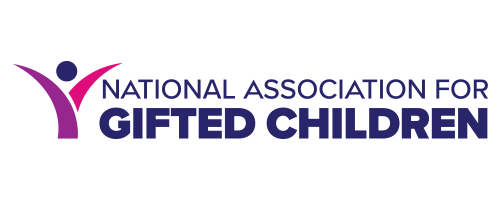Calm Strength in the Rapids of Reform: The Enduring Legacy of Dr. Mary M. Frasier
By Sheyanne S. Smith & Ann Robinson
In honor of NAGC’s 70th anniversary, we asked Dr. Ann Robinson and Sheyanne Smith to contribute a series of blogs celebrating and remembering NAGC leaders. The fourth blog in this series honors Dr. Mary Mack Frasier, a transformative NAGC leader, volunteer, and gifted education researcher.
“I’ve always remembered that Plato talked about observing children being placed in situations where they can be fooled. Those who can't be fooled are those who question and wonder what if. In gifted education, we should wonder what if.”--Mary M. Frasier, 2003
In the ever-shifting current of gifted education, few figures have been as steady—and as transformative—as Dr. Mary Mack Frasier. Grounded and resolute in her commitment to equity, Dr. Frasier provided decades of leadership through major periods of reform. Like a boulder in a river’s current, she remained rooted in her purpose: to uncover and elevate the hidden talents of students too often overlooked.
While Dr. Frasier’s scholarly legacy spans everything from identification reform to creative thinking, her leadership in national service is equally enduring. During her presidency at the National Association for Gifted Children (1987–1989), Mary navigated one of the organization’s most turbulent periods. Facing a financial and structural crisis, she led with integrity and grace—hiring the first full-time executive director, overseeing board reform, and ensuring the survival of NAGC’s foundational files and funds. As Dr. Sally Krisel recalled, “Faced with a financial and organizational crisis, Mary led NAGC through difficult changes… Her unquestioned integrity and grace were critical as NAGC weathered some difficult days with minimal pain for the individuals affected.” For her service, Mary received both the NAGC Distinguished Service Award (1991) and the inaugural Ann F. Isaacs Founder’s Memorial Award (2002). Today, NAGC’s Javits-Frasier Scholarship, named partly in her honor, continues her legacy of empowering educators in Title I schools.
Born in 1938 in Orangeburg, SC, Mary came of age in a time and place marked by segregation and inequity. Orangeburg was the epicenter of South Carolina’s desegregation movement from 1950-1972 (United States Civil Rights Trail), and Mary’s early life was shaped by both racial injustice and deep academic promise. After skipping two grades, she entered college in 11th grade through the Ford Foundation Early Entrance program—an important but little-known opportunity that launched her extraordinary academic path. At just 19, she graduated with a bachelor’s degree in music from South Carolina State University (SCSU).
Mary's early career as a high school chorale and humanities teacher coincided with landmark social changes: the Civil Rights Act of 1964 and President Johnson's War on Poverty. Contrasting the influx of opportunities, tensions of desegregation had a firm grip on Frasier’s hometown. In 1968, three students of her alma mater, SCSU, were fatally wounded in a civil rights protest later named the Orangeburg Massacre. Through a time of social upheaval and economic turmoil, Mary remained resolute in her mission to scout talent. She believed deeply that the arts opened opportunities for talent emergence in all areas—including academics. This conviction led her to spend summers working with Upward Bound, one of Johnson's experimental federal programs designed to identify and motivate underachieving students from low-income backgrounds to consider college. A few years later, Upward Bound and Talent Search would combine the Special Services for Disadvantaged Students (SSDS) to become the TRIO programs. Mary became coordinator for SSDS at SCSU, with the role of improving retention and graduation rates for students transitioning through higher education. Her experiences providing access and opportunity to those from disadvantaged backgrounds would profoundly shape her later work. As she noted, “I’ve always had this curiosity about how people develop talents. And I guess I had a special affinity for people who were achieving and didn't come from the expected backgrounds—that's who I was!” (2003).
Mary pursued her doctorate at the University of Connecticut on a Ford Foundation scholarship, earning her Ph.D. in Educational Psychology. While she is widely known for her work on equitable identification, her dissertation focused on helping students break large ambitions into manageable goals. During this time, she began exploring the intersection of cultural diversity and giftedness, developing the idea of “atypical giftedness”—a concept that encouraged educators to look beyond standardized tests and recognize diverse forms of excellence. Reflecting on her own experience, she shared:
I know, as I reflect back, people would have been able to find me that way, too, if they had looked . . . I grew up with teachers who knew they were preparing Black children to go out into a world where you had to be 150% better than everybody else. (Martin, 2003)
In 1974, Mary began a 30-year tenure at the University of Georgia. There, her research culminated in transformative contributions to the field. Among her most enduring legacies is the Frasier Talent Assessment Profile (F-TAP), a multiple-indicator model that moved beyond single test scores to recognize a broader range of gifted behaviors, such as motivation, reasoning, humor, creativity, memory, and inquiry. Another critical contribution from Dr. Mary Frasier was the development of “Frasier’s Four A’s” (Frasier, 1997). She identified four key issues impacting the identification of gifted minority students: Attitude, Access, Assessment, and Accommodation. Her framework has been applied across time and in numerous studies. One of Dr. Frasier’s colleagues, Dr. Ken Dickson, used the Four A’s to frame his work on underrepresented students and the importance of parent and school engagement. He credited Frasier’s foundational contributions:
The areas represent outcomes of research from several stakeholders regarding diverse learners and gifted programs and particularly Dr. Mary Frasier. Dr. Frasier, an African-American scholar and past president of the National Association for Gifted Children, dedicated her life to areas regarding underrepresented populations of learners. In that regard, this information is based on her contributions. (Dickson, 2012)
Frasier also developed “Panning for Gold,” a teacher observation protocol that helped educators spot gifted behaviors in students often overlooked by traditional identification methods. Her stance was clear: “You cannot make a person gifted”—a reminder that giftedness is found, not manufactured. Frasier’s extensive publications, including articles in Gifted Child Quarterly, Roeper Review, Gifted Child Today, and Journal for the Education of the Gifted, established her as a thought leader in both research and advocacy. As Associate Director for the National Research Center on the Gifted and Talented, she championed a shift in perspective—from deficits to potential. In 1984, she founded the Torrance Center for Creativity and Talent Development at UGA and later served as its director, coordinator of the gifted education program, and Aderhold Distinguished Professor.
Dr. Frasier also helped shift state policy. As a member of the Georgia Department of Education Task Force, she pushed for changes in identification rules. Her efforts paid off. Between 1997 and 2005, the number of African-American students identified for gifted programs in Georgia rose by over 200%, and Hispanic participation increased by 570% (National Research Center on Gifted and Talented, 2006).
Perhaps the most enduring testament to her legacy is the scholarship now bearing her name: the Javits-Frasier Educational Leadership Program, which has supported more than 200 educators working in Title I schools (Krisel, personal communication). (The Javits-Frasier Educational Leadership Program applications are now open through June 6, 2025.) To honor Frasier’s enduring impact at the state level, the Georgia Association for Gifted Children established the Mary Frasier Equity and Excellence Award, recognizing those who advocate for access and excellence among underrepresented gifted learners.
Dr. Mary M. Frasier passed away in 2005, but her work and words continue to guide the field. In a 2003 interview, she said “You see, my research led me to focus on the kinds of behaviors that people exhibit if they're gifted; it shouldn’t matter whether you are black or white or pink or polka dot—a favorite expression of mine.” To honor her is not simply to remember her. It is to continue her mission: to reshape systems with compassion, to hold firm to equity, and to be the grounded force that makes lasting change possible.
Sources Consulted:
-
Council for Opportunity in Education. (n.d.). TRIO history. https://coenet.org/trio-history/
-
Dickson, K. (2012, December 3). Overcoming underrepresentation in gifted programs, Part I: Attitude and access. https://www.sengifted.org/post/overcoming-underrepresentation-in-gifted-programs-part-i-attitude-and-access
-
Georgia Association for Gifted Children. (n.d.). GAGC awards. https://gagc.org/page-1826517
-
Grantham, T. C. (2001). Straight talk on the issue of underrepresentation: An interview with Dr. Mary M. Frasier. Roeper Review, 24(2), 50–51. https://doi.org/10.1080/02783190209554128
-
Groutt, J. (2003). Milestones of TRIO history. Opportunity Matters, 2(1), 1–22. https://www.pellinstitute.org/downloads/trio_clearinghouse-Groutt_January_2003.pdf
-
History.com. (2018, January 31). Orangeburg Massacre. https://www.history.com/articles/orangeburg-massacre
-
Martin, D. E. (2003). Mary M. Frasier: A master and mentor in the field of gifted education. Roeper Review, 25(4), 158–162.
-
Renzulli Center for Creativity, Gifted Education, and Talent Development. (2006). The Georgia story: One state’s approach to the underrepresentation issue. https://gifted.uconn.edu/schoolwide-enrichment-model/the_georgia_story/
-
University of Georgia. (2005, February 7). Mary Frasier, gifted education scholar and Torrance Center founder, dies. UGA Today. https://news.uga.edu/mary-frasier-gifted-education-scholar-and-torrance-center-founder-dies-feb/
-
University of Georgia College of Education. (2005). Mary M. Frasier obituary. UGA College of Education. https://web.archive.org/web/20061118122512/http://www.coe.uga.edu/coenews/2005/mary_frasier_obituary.htm
-
U.S. Department of Education. (n.d.). Upward Bound program. https://www.ed.gov/grants-and-programs/grants-higher-education/trio/upward-bound-program
Sheyanne S. Smith is the High Ability Learning Specialist for the Nebraska Department of Education. She holds a bachelor’s of English and a Master’s of Arts in Teaching from Belmont University, and a Master’s of Education in Gifted, Talented, and Creative Education from University of Arkansas Little Rock. She is currently a doctoral student at William & Mary, specializing in gifted education administration.
Ann Robinson, Ph.D., is the Distinguished Professor and Founding Director of the Jodie Mahony Center for Gifted Education, University of Arkansas at Little Rock. Dr. Robinson is also a past NAGC President, former editor of Gifted Child Quarterly, and the 2023 recipient of the 2023 Ann F. Isaacs Founder’s Award.


